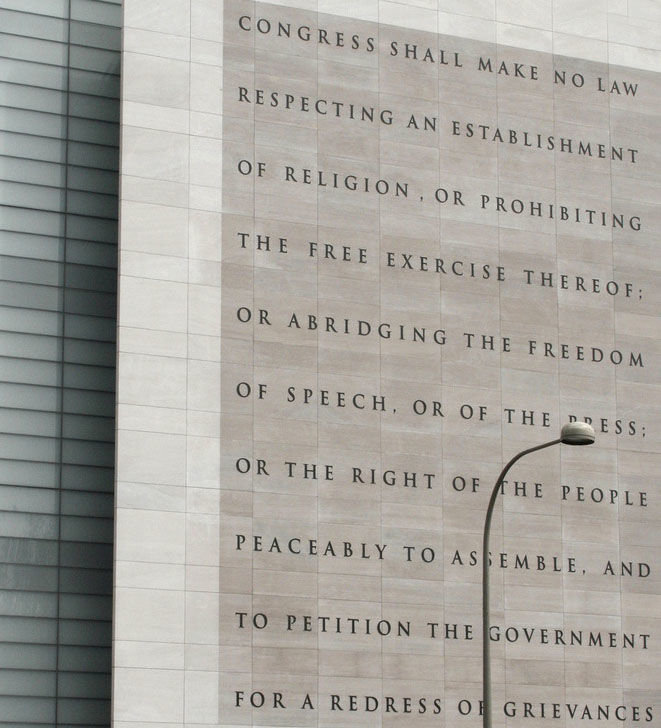Guest Column: The First Amendment has no single constituency, and that’s a problem
October 20, 2020
Editor’s Note: This column originally appeared in USA Today.
Can you imagine a U.S. Supreme Court nominee being unable to explain the Second Amendment? Or drawing a blank on the ruling in Roe v. Wade?
That would lead to cries of outrage, a 24-news cycle and in all likelihood, the withdrawal of the nomination.
But when Judge Amy Coney Barrett struggled to name all the freedoms of the First Amendment and Sen. Ben Sasse (R-Nebraska) tried to help her out with the wrong answer, it was barely a blip on Twitter.
It began last week when Sasse tossed Barrett what presumably was intended as a softball question: “What are the five freedoms of the First Amendment?”
Barrett’s response: “Speech, religion, press, assembly…. Speech, press, religion, assembly (now counting on her hands) … I don’t know. What am I missing?”
She turned to the wrong person for a lifeline. Sasse quickly said, “redress or protest.”
Then came the most astonishing moment of all. A relieved Barrett said “Oh, OK.”
“Oh, OK?” Not quite. The fifth freedom is “the right to petition government for redress of grievances,” a guarantee close to the hearts of lobbyists. The right to protest is not one of the five freedoms, but it can be used in tandem with all of those rights.
Don’t get me wrong. I’ve had the privilege to testify before a Congressional committee, and I’ve been interviewed live on national television. Both can be nerve-wracking experiences. If I were to do both at the same time, with my future and that of the Supreme Court at stake, I’m pretty sure I would struggle to remember my middle name. Of course, if the interviewer offered up the wrong middle name, I’m pretty sure I would catch that.
That said, it was a mental lapse and not the crime of the century. In the end, this isn’t about a judge or a senator.
It’s about the First Amendment. Its five freedoms are at the heart of the American experience, giving each of us the right to express ourselves freely and to exercise our personal faith, while providing the tools needed to keep a check on the abuse of government power.
But instead of that bundling of rights making the First an untouchable amendment, it does just the opposite. The First Amendment has no clout.
The news media are all in on freedom of the press. Churches and religious organizations will readily fight for freedom of religion. Support for freedom of speech tends to be based on what is being said. Assembly is a popular freedom in the abstract, unless civil unrest looms in highly visible cities. For what it’s worth, the right of petition is just fine.
The First Amendment has no single constituency, and that’s a problem.
When journalists assert their right to freedom of the press but rarely write about incursions on faith, that’s a problem.
When people of faith are outraged by COVID-19 limits on church attendance and dismiss the news media as “fake news,” that’s a problem.
When a university proclaims itself to be a “marketplace of ideas” and tries to limit assembly to a “free speech zone,” that’s a problem.
When someone uses their free speech at full volume on social media, only to demand the firing of public figures who do the same, that’s a problem.
Our rights to speech, press, religion, assembly and petition are embodied in the most important 45 words in American history. Those freedoms are buffeted, though, by those who choose to embrace the First Amendment selectively.
The Second Amendment poses no such problem. It is clearly about the right to bear arms, though the whole “militia” business muddies things up a bit. Its constituency is clear and powerful (see the right to petition).
Sasse followed up with a second question to Barrett about the First Amendment, asking if she knew why the five freedoms were packaged in a single amendment.
“I don’t know why, actually,” Barrett responded. “I’m sure there’s a story that I don’t know there about why those appeared in the First Amendment all together rather than being split up in different amendments.”
And this was where the previously imprecise senator nailed it.
“You don’t really have freedom of religion if you don’t also have freedom of assembly,” Sasse explained. “You don’t really have freedom of speech if you can’t also publish your beliefs and advocate for them. You don’t really have any of those freedoms if you can’t protest at times and seek to redress grievances in times when government oversteps and tries to curtail any of those freedoms.”
The very best way to protect your favorite First Amendment freedom is to take a stand for all of them. That requires respecting the exercise of free expression in all its forms, even if the expression isn’t to your liking. That mindset would contribute to a more civil society and more consistent support for the amendment that makes America’s ideals possible. It may also prove handy for a future Supreme Court nominee.
Ken Paulson is the director of the Free Speech Center at Middle Tennessee State University, a former editor of USA Today and a member of USA Today’s Board of Contributors.







